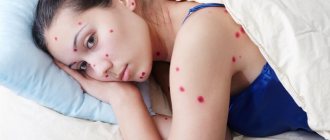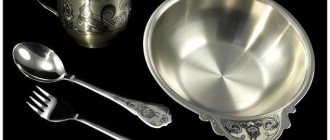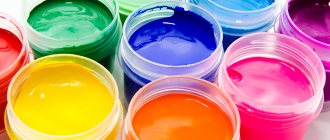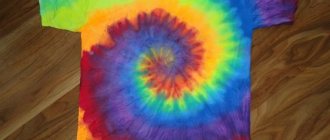Paint that gets on clothes can be removed in many ways. For cleaning, both household and kitchen products and special chemicals are used. Methods for wiping off dried or fresh marks vary depending on the type of paint (for example, watercolor, acrylic, oil, water-based) and fabric. Often trousers get dirty from painted but not yet dry benches. More details about everything below.
- How to remove oil paint
- How to Clean Acrylic Paint
- Removing latex paint
- Washing off water-based paint
- Alkyd enamel
- How to wash watercolor paints
- Gouache
- Tempera
- How to clean stamp ink
- Hair dye
How to remove oil paint
You can remove it using means that are available in almost any refrigerator. They can be used individually or in combination.
Vegetable oil
Place a rag or a piece of oilcloth folded in several layers under the contaminated area of clothing. A washcloth is dipped in vegetable oil, and paint stains are treated with it. After 10-15 minutes. After treatment, wash with powder or soap. If the dye does not come off, you can try to clean the clothes with gasoline, nail polish remover, or salt. After cleaning, items are washed in the standard mode.
Starch
To remove starch dye, clothes are placed on an ironing board with the stained side up. Place paper or an unnecessary piece of fabric under the contaminated area, and starch is poured on top in an even layer. A clean piece of paper is placed on the powder. The surface is ironed several times. Most of the dye is absorbed by starch, and its remnants are removed after washing.
Gasoline, acetone or turpentine
The method is not suitable for delicate items and materials with unstable dyes.
A rag or sponge is dipped in turpentine, gasoline or acetone.
Rub the dirt until all traces of paint are removed. Afterwards, the clothes are washed by hand or in the washing machine on the usual cycle.
Liquid soap
Soiled clothes are placed on the ironing board with the stain facing up. A rag is placed under the dirt, and liquid soap is poured on top. The product should saturate the fabric well. After 15-20 minutes. Liquid soap with paint residues should be washed off with warm water, and then the clothes should be washed in the washing machine as usual.
Comprehensive cleaning
The method is not for fabrics that require careful handling, and things with unstable dye, but it effectively removes old paint.
- Coarse pieces of dried paint material are removed from the surface of a jacket or any other clothing with a knife or nail file. Act carefully so as not to damage the material.
- The remaining dye is softened with sunflower oil, gasoline, turpentine or nail polish remover. Any of the listed means wets the stain. This is done with a washcloth or sponge.
- After half an hour, you can clean the surface with a washcloth or cloth.
- The final step is washing.
Margarine
Apply margarine to the stain, after 20-30 minutes. softens the dye, then it can be easily wiped off with a rag or washcloth. After removal, the cleaned area is washed with laundry soap. If it is not possible to completely get rid of traces of paint, a stain remover is used. Finally, the clothes are washed normally.
Kefir and borax
Borax is a sodium salt of boric acid, which is used in everyday life to remove stubborn contaminants. It can be purchased at any hardware supermarket or pharmacy; the product is inexpensive. Sodium tetraborate not only removes old paint, but also removes stubborn stains from alcoholic and coffee drinks, felt-tip pens, and removes rust.
To prepare an effective composition, take 55 g of borax, 30 g of table vinegar, 75 g of natural kefir with a fat content of 3.2%. Mix all the ingredients so that the product is homogeneous. Apply the solution to the stain and let the mixture dry slightly. Then put cling film over the composition and turn the item inside out. It also needs to be treated with a similar solution. After half an hour, evaluate the result. If necessary, increase the proportion of borax to 75 g.
How to Clean Acrylic Paint
It can be removed from clothing mechanically, with special solvents or with ingredients on hand.
Mechanical cleaning
- The dried dye is scraped off with a knife, spoon, coin, or nail file. Afterwards, the clothes are washed as usual.
- Fresh paint is blotted with a dry paper towel, napkin or toilet paper. In this case, the stain is not rubbed over so that its area does not increase. The contaminated area is soaked until traces of acrylic are completely removed. After cleaning, the item is washed.
- Dried stains can be removed with a brush if the dye is splashed onto clothing in small drops or balls. The method is effective when cleaning dense material.
Isopropyl alcohol
The product is sold in all pharmacies. Before cleaning with isopropyl alcohol, place a rag folded several times under the stained area on the clothing. A sponge or washcloth is generously soaked in alcohol, and the acrylic stain is carefully treated. After softening, the remaining dye is scraped off with a fingernail, coin or manicure file. After cleaning, the clothes are machine washed.
Ammonia, vinegar and salt
The item is soaked for a couple of minutes in cold water. At this time, vinegar and ammonia are mixed in equal parts in a separate container (10% ammonia concentration in water), a little salt is added, everything is thoroughly mixed. The clothes are removed from the water, twisted, and spread on a flat surface. A washcloth is moistened in the prepared solution, and the area is thoroughly rubbed with it until traces of paint completely disappear. After cleaning, the clothes are washed.
Glass cleaner and acetone
The method is not suitable for synthetic items; it also does not remove dried stains.
The item is placed on a flat surface with the stain facing up. Glass cleaning liquid is applied to the acrylic mark, and the top is treated with acetone. After a few minutes, the paint will soften; you can try to rub it off with a fingernail, coin, knife or manicure file. The cleaned area is blotted with a clean, dry cloth. The procedure is repeated until complete cleansing. Cleaning is completed by washing on the usual cycle for the fabric.
Dishwashing liquid
Only small, fresh acrylic-based stains can be removed.
The contaminated area is rinsed with warm water; it washes away large parts of the dye. Apply a cleaning agent to a damp surface with a washcloth. After softening, the remaining paint is removed from the fabric fibers with a fingernail, spoon or manicure file. The item is washed in a machine on its standard mode.
Hot water, washing powder and vinegar
A little washing powder is diluted in a glass of hot water and 1 tbsp is added. spoon of vinegar. The solution can be used to clean clothes from stains that have just appeared. The mixture is applied to the dirt with a sponge or rag. The paint is removed carefully without smearing, so as not to increase the area of the stain. When the mark becomes almost invisible, the clothes are washed in a machine on a standard cycle.
Hairspray and acetone
Only fresh paint is cleaned. Instead of acetone, you can use nail polish remover. Not suitable for synthetic materials.
Place a rag under the stained area. Clothes are placed on a flat surface. Hair fixative is sprayed onto the dirt. The treated area is moistened with acetone. After the acrylic has softened, its remains must be thoroughly wiped off with sponges or a rag. After cleaning, the item is put in the wash.
Acetone or nail polish remover
Small fresh stains are washed off. Do not clean synthetic fabrics or those with unstable dyes. Before cleaning, it is better to test the fabric's reaction to acetone in a small, inconspicuous area.
Carefully wipe the stain with a sponge soaked in acetone. They do everything carefully so as not to increase the area of the stain. After cleaning, the clothes are machine washed.
Medical alcohol
A method for removing fresh contamination. The clothes are laid out on a flat surface, and a napkin or rag is placed under the dirt. The stain is generously moistened with ethanol. In 10 minutes. Remains of softened paint are removed with a clean bandage or rag. After cleaning, the item is washed by hand or in a machine.
Refined gasoline
Using a washcloth soaked in gasoline, you need to thoroughly wipe the contaminated area on the clothing from edge to center. As the sponge or sponge becomes dirty, replace it with a new one. After cleaning, the item is machine washable.
Acrylic remover
Do not clean synthetics, delicate materials, or those with unstable dyes.
The sponge is soaked in the product and the stain is thoroughly treated. In order not to increase the area of the stain, the washcloth should be replaced with a new one more often. The final stage is washing.
Stain remover Vanish
Apply the product to small stains with a cotton swab, and to larger stains with a sponge. After a few minutes, under the influence of the stain remover, the acrylic will soften, and the stained area can be washed by hand with any detergent. At the end, the clothes are washed in a machine on a standard cycle.
Hot water, laundry soap and sunflower oil
Only fresh acrylic stains are removed. Before removal, cellophane is placed under the stain. A few drops of sunflower oil are applied to the stain, after which the paint particles are removed with a sponge.
The oiled area is soaked in hot water, soaped with laundry soap and washed by hand. Dense material can be cleaned with a brush. The final cleaning stage is machine wash.
Solvent
Work with solvent is carried out with gloves, a respirator and goggles.
Using a sponge or cloth, apply the solvent to the stain after 10-15 minutes. the remaining paint is removed. The item is washed in a machine on its standard mode.
Alcohol and salt
The method is used for dense synthetic materials.
The medical alcohol is heated, a little salt is added to it, and the composition is thoroughly mixed. Concentrated brine is prepared in another container. The alcohol composition is applied to the contamination. After 15 min. the stain is treated with salt concentrate. After cleaning, the item goes into the wash.
Scotch
Scotch tape will help with dried stains on linen and thick cotton fabrics. The adhesive tape is applied to the dirt, smoothed with your hands, and smoothly torn off. The acrylic pieces will remain on the back of the sticky side of the tape. If not all pieces are removed, the procedure is repeated.
General recommendations
Before removing paint from clothing, you need to know its type. Further cleaning will depend on this. In addition to the dye itself, the type of fabric and age of the stain will also affect the method.
A few tips for removing paint:
- The fresher the stain, the easier it is to deal with.
- Before treating the stain with your chosen product, place a few napkins under the stain to be on the safe side.
- To make sure the product is safe, test its effect on an inconspicuous area of fabric.
- To localize stains, scrub the stain from the edges to the center.
- Stain remover works well when washing, but before doing so, use the methods below.
- When finished, rinse the item and dry it in fresh air.
We will try to remove paint from clothes:
- stamp,
- acrylic,
- latex,
- water-based,
- oil,
- watercolor,
- gouache,
- tempera,
- printer ink,
- hair dye,
Removing latex paint
Latex-based dye is removed by prolonged washing with additional detergents or ethanol.
Medical alcohol
Ethanol penetrates deeply into fabric fibers, so it is easy to clean paint without additional means and methods. A washcloth or sponge is generously soaked in alcohol, and the area is thoroughly wiped first with an alcohol-soaked sponge and then with a clean rag. After cleaning, the clothes are thrown into the washing machine.
Long-term wash
If the clothes are freshly soiled, soak them in cold water for a few minutes, wring them out, and wash them in the machine at t=+30 °C on the longest setting with high-quality washing powder.
Additional measures
Long washing is not enough to remove dried latex paint. Washing powder or powder stain remover is first poured onto the stain.
The powder is rubbed into clothes with an old toothbrush.
The treated area is washed in hot water, the fabric is machine washed at high temperature.
Hydrogen peroxide and lemon
To remove paint at home, you can use crushed lemon (in a blender or meat grinder). First, treat the stain with hydrogen peroxide, then place the citrus pulp on top and gently rub the resulting mixture into the stained fabric. After an hour, remove the remaining composition. If the result seems unsatisfactory, repeat the procedure.
Please note that colored fabrics cannot be cleaned with hydrogen peroxide. To process them, use exclusively crushed lemon.
Washing off water-based paint
To remove the water-based emulsion, it is enough to thoroughly wash the item by hand or use antiseptic wipes.
Handwash
The stained area is soaked with water, detergent is applied to it, and the item is washed. Use laundry soap, liquid or powder detergent, and stain remover. Remove stains from dense fabrics with a brush. Cleaning is completed by washing.
Alcohol antiseptic wipes
If you cannot wash the clothes immediately, the stain can be treated with antiseptic wipes. If necessary, several of them are used. The alcohol they contain destroys the water-based emulsion. Traces wiped off with napkins will be easier to remove.
How to wash watercolor paints
Watercolor can be removed mechanically, using improvised means or stain removers.
Washing powder or laundry soap
It is better to wash watercolors immediately after getting on clothes. Before washing, it is soaked in cold water, stains are removed by hand with powder or soap, and bleach is applied to light-colored fabrics. After removal, normal washing is done.
Soap and soda
The method removes stains from light cotton and linen clothes. The item is first soaked in cold water and wrung out. 1 liter of water is poured into a metal basin, 1 tbsp is added. spoons of soda, 1/2 piece of laundry soap, grated on a coarse grater. Add a little bleach if desired. The mixture is placed on the stove and brought to a boil.
After boiling, wrung out clothes for 10-15 minutes. soaked in a soap-soda mixture, removed from it and soaked again. After the solution has cooled, wash the soiled item in it and then rinse it in clean water with conditioner.
Soap and denatured alcohol
The stained area is washed with soap and cool water. While the clothes are drying, a little technical ethyl alcohol is heated. Use a clean washcloth soaked in alcohol to wipe the stained areas on things until the stains disappear completely. Afterwards, the areas where the watercolor was are hand washed with warm water and then sent to the machine.
Ammonia and salt
Watercolor is removed from synthetic fabric. First, the stained area is wiped with a sponge soaked in ammonia. Then the clothes are soaked in a container with a cool saline solution, for the preparation of which 1-2 teaspoons are added to 1 liter of water. salt. After soaking, the item is washed with a suitable washing powder.
Soap and boiling water
Helps remove stains from woolen clothes. Things are soaked in cold water, then the stained area is rubbed with laundry soap. The soaped fabric is immersed in boiling water for a few seconds. After washing off the stain, the item is washed again.
Baby powder
The item is washed twice with high-quality baby powder.
If traces remain, the stain is washed off by hand with soap or the same powder.
Soda and peroxide
0.1 kg of soda and 0.1 liter of hydrogen peroxide are diluted in 0.1 liters of warm water. The resulting composition is used to treat the soiled part of the clothing, then wash it in the machine.
Vinegar
The method does not apply to delicate fabrics.
The vinegar heats up a little, and the area on the clothing with the paint that has fallen on it is treated. Afterwards, rinse in cool water and finally machine wash.
Stain removers
The product is selected according to the type of fabric of the clothing. Before using a stain remover, you should read its instructions.
Usually a little product is applied to the stain, after a few minutes it is washed off. If necessary, the procedure is repeated. At the end of cleaning, washing is done.
Popular stain removers:
- Vanish;
- Amway;
- Stork;
- soap with whitening effect “Eared Nannies”;
- Bos;
- Sarma;
- Domestos;
- Ecover;
- Antipyatin.
Mechanical removal
Using a dishwashing sponge or brush, you can remove watercolors mechanically only from dense materials. Dry paint is scraped off. Remains of watercolor will come out during washing.
Glycerol
The area is treated with a sponge generously soaked in glycerin. After 15-20 minutes. the paint softens and is easily removed from the fibers. Clothes are first washed in warm water and soap, and then as usual.
Glycerin and medical alcohol
Glycerin is mixed with ethanol in equal proportions and applied to the paint. After 15-20 minutes. Clothes are washed by hand with detergent, and finally washed in a machine.
Boiling
Dilute 1 tbsp in 1 liter of water. spoons of soap crumbs, ammonia, hydrogen peroxide and 20 g of soda ash. The clothes are soaked in the prepared mixture and boiled for at least half an hour over low heat. After boiling, the item is washed and rinsed in cool water with conditioner.
Removing dried enamel from clothes
If the dye has already hardened, then more serious cleaning of the surface will be required. Let us consider in more detail what to do in such a situation:
- the ingredients are pre-prepared: 2 tablespoons of vinegar, one tablespoon of salt and two tablespoons of ammonia;
- the salt is dissolved in vinegar, after which ammonia is added to the composition;
- the finished mixture should be evenly applied to the entire problem area of the fabric item;
- Next, you need to leave the wardrobe item for 5-10 minutes so that it has time to soak in and have an effect;
- Subsequently, the stain will be removed using a brush with stiff bristles, which removes a layer of thickened dye.
It should be understood that such a solution copes well with problem areas, however, on colored things it can eat away the dye, so you should first do a little experiment.
Important. For white items, boiling in a chlorine solution for 30-60 minutes works well. Here 1 liter of chlorine is used per 6 liters of water.
Gouache
Products for removing gouache are sold in household chemical stores, hardware stores and pharmacies.
Soap
The stain is moistened with water, which washes off the main part of the dye. The stain is washed off by hand with soap. You can soap it up and wash it off after a while. Fresh gouache is washed off immediately, the dried mark is rubbed off with a brush, soaped again and washed off. If traces of paint remain after washing, additional products are used.
Glycerin and ammonia
The components are mixed in equal proportions. The mixture is applied to the stained area for half an hour. Traces of gouache are soaped with laundry or toilet soap. The item can be washed by hand or by machine.
Gasoline and vinegar
In a separate container, vinegar and purified gasoline are mixed in a 1:1 ratio. The first ingredient is heated first and then the second ingredient is added.
Cleaning is done with gloves.
The product is applied with a sponge, after a few minutes the treated area is washed off, the item is completely washed. To remove the smell of gasoline during rinsing, add fabric softener to the water.
Eucalyptus oil
The clothes are spread out on a flat surface, oil is poured onto the stain, after 10 minutes. Washable in warm water with detergent.
Toothpaste
The stained area on the clothing is moistened with water, washed, and then toothpaste is applied to it. After 5 minutes, the treated stain is rubbed with a brush or rubbed with your hands. Washing at the end is required.
Mustard powder
In a separate container, mustard powder is diluted with water to a mushy state. Mix for 15-20 minutes. applied to a dirty place.
The mustard composition should not dry out; it is constantly moistened with water.
When the gouache softens, it, along with the pulp, is removed from the clothes, and the latter is washed in a machine.
White Spirit
Do not remove gouache from delicate materials. Stains are treated with white spirit using sponges or a washcloth, then the product is washed.
Soda
First, the problem area is washed under the tap, then soda is poured onto the stain. After 15 min. the remaining soda and gouache are washed off, and the item is washed using the usual method.
Detergents
- The bulk of the gouache is removed with running water.
- Dried paint residues are removed with a brush.
- Concentrated detergent is added to a container of warm water.
- The clothes are soaked for half an hour in the prepared solution, and then washed by hand or by machine.
Butter and washing powder
One teaspoon of oil is mixed with a small amount of powder until smooth. The mixture is rubbed into the stain. After half an hour, hand or machine wash is done.
Dish detergents
It is better to use thick gels.
First, the stain is moistened, generously lubricated with gel, and after half an hour it is washed in warm soapy water.
Acetone or nail polish remover
The method cannot be used for synthetic-based fabrics and with unstable dyes. Place cellophane or rags under the stained area. The top of the stain is treated with a sponge soaked in water. When the bulk of the paint has been removed, the remains are rubbed off with acetone. After 15 min. The item is washed first by hand and then in the washing machine.
How to clean stamp ink
- Mustard powder is diluted with water to a mushy consistency. The mixture is applied to the stained area of clothing. After 24 hours, the dried remains of the mustard composition are scraped off with a thin, but not sharp, object, then the item is washed in the usual way. The method is used for silk and other delicate materials.
- Ammonia is combined with turpentine in equal proportions. The mixture is poured onto the stain, and after it disappears, the item is sent for washing.
- Glycerin and denatured alcohol are mixed in a 1:1 ratio. A cotton pad is moistened in the heated mixture and the dirt is wiped with it. This is an easy way to remove stamp ink stains from genuine leather.
Useful tips
When it becomes necessary to manually remove paint from clothing, first of all, you need to think about the degree of protection of the skin. We are talking about rubber gloves. This way you will protect your hands from chemicals and from dryness when washing.
Before using any drug, test its effect on an invisible area of tissue. If there are no negative consequences, you can continue cleaning.
The stain remover works great for this type of stain. If pollution is an everyday thing for you, it is advisable to buy the product and use it on an ongoing basis.
Hair dye
It is better to wipe off a paint stain immediately after it appears. The solvent is the styling varnish; its components break down the components contained in the paint.
Dry paint from white clothes, first 30 minutes. soak in bleach or hydroperite solution. After soaking, items are washed with regular powder.
Light colored items can be cleaned with citric acid solution or fresh lemon juice. Any of these components is diluted in 0.1 liters of warm water. The stained area is moistened with the solution and left for 20-30 minutes. If after rinsing the stain is not removed, the cleaning procedure is repeated until the paint completely disappears. Lemon juice is good for cleaning silk and woolen items.










